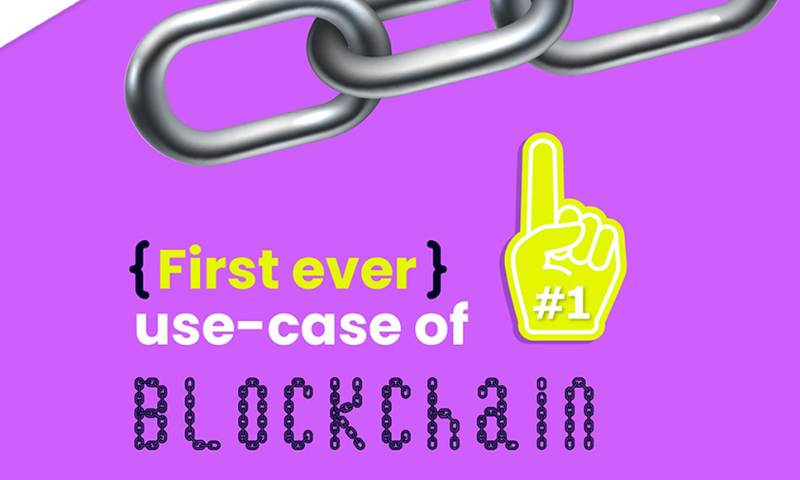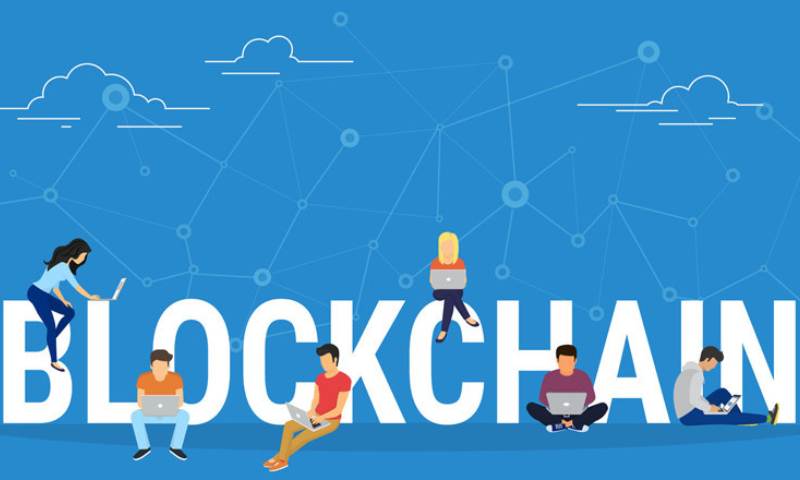First use cases of blockchain went far beyond creating digital cash. Picture a world where every transaction, agreement, or record is secure, transparent, and tamper-proof. This isn’t a sci-fi fantasy—it’s the real-life potential of blockchain technology I’ve seen grow since its inception. Beyond the buzz of Bitcoin, blockchain’s first triumph, revolutionary applications are surfacing. They’re reshaping industries like healthcare and supply chain right before our eyes. Let’s dive into the transformative journey from blockchain’s early days to its current innovations that promise a smarter, more trustworthy digital future.
Tracing the Roots: A Historical Overview of Blockchain Beginnings
The Genesis Block and Satoshi Nakamoto’s Vision
Satoshi Nakamoto started a huge change with a simple idea. In 2008, Satoshi, a name we now all know, wrote a paper. This paper showed the world a new kind of money called Bitcoin. It wasn’t like normal money. It worked all by itself, with no banks in control. This idea used something called a blockchain. A blockchain is like a long chain of blocks. Each block holds info on every deal made. It’s all overseen by many computers, not just one boss.
This was the start of Bitcoin. But where did it really begin? It all kicked off with what we now call the “genesis block.” This first block was made by Satoshi. It’s important because it was the first time someone used a blockchain. And it worked!
Early on, folks didn’t quite get Bitcoin. It was new and odd—digital money? Really? But some tried it. They sent bits of Bitcoin to each other. This showed the world that Satoshi’s dream could work.
Early Blockchain Transactions and Their Legacy
Imagine being one of the first to try Bitcoin. It was a big adventure into the unknown. The first swap of Bitcoin for real stuff was for pizza! Now, that sounds funny, but it was a big moment. It proved Bitcoin was worth something in the real world. Back then, it was all about people testing it, seeing if it could work for buying a snack or just sending cash to a friend far away.
These early deals were proof. Proof that you could trust this new system. You didn’t need a bank or a credit card. You just needed a computer. This was huge! It meant people everywhere could use money without big fees or waiting for a bank’s okay. And it was safe. Thanks to a special kind of math called cryptography, no one could fake a Bitcoin deal.
The buzz from these first steps led to more and more people jumping in. They used Bitcoin to send money across the world. They started to see how it could change things – a lot. With Bitcoin, you could move money fast and without a bunch of extra costs.
Even shops began to sign up. They started accepting Bitcoin, saying “yes” to this new, web-based money. This was early blockchain adoption in action. People found they could do things they couldn’t before, like send cash to family across the sea with just a tap.
Satoshi’s vision? It was all about giving power to the people. Banks were out of the game. It was just person to person, peer to peer. What started as one small block in a chain grew to something big that we still build on today. The story of Bitcoin shows us how one idea can start a whole new way of doing things. It wasn’t just about the money. It was the start of folks using blockchains for all kinds of stuff — from keeping records safe to making sure no one sells fakes.
These early blockchain tales are not just history. They guide us as we think up new ways to use this tech. From making sure art is real to keeping our health records safe, the journey of blockchain is still going strong. And it all began with that first block from Satoshi, changing not only money but how we think about trust and trade in our digital age.
Bitcoin: Spearheading the Financial Revolution
From Concept to Currency: Bitcoin Implementation Strategies
We didn’t always have Bitcoin. It started with Satoshi Nakamoto’s idea. Satoshi imagined money without banks. He crafted codes to make a new kind of money. This money didn’t need anyone in charge. That’s how Bitcoin began. It was a big deal because it was the first of its kind.
Satoshi wrote a plan called a whitepaper. In this, he explained how Bitcoin works. The key was a shared list called blockchain. Everyone could see it and check it. No one could change it alone. This built trust without needing banks.
Bitcoin needed people to believe in it. So, Satoshi made the software open. This means anyone could use or change it. People liked the idea. They started using Bitcoin for paying or saving. They used their computers to keep the list secure. We call them miners.
These miners solve puzzles with computers. When they win, they add new Bitcoins to the list. This is called mining. It’s not digging in the ground. It’s using computers to find answers. People everywhere can send Bitcoin across borders. You don’t wait for a bank to open. And you don’t pay big fees.
Transformations in Financial Services and Peer-to-Peer Networks
But Bitcoin is more than just money. It changed how we use money. Before Bitcoin, sending money was slow. It could take days. Fees were high, too. That’s because banks had to check everything. With Bitcoin, we send money like an email. It goes fast, and it doesn’t cost much.
This is called peer-to-peer. It means you and I can deal directly. We don’t need a bank in the middle. We use the internet and Bitcoin to send value. It’s quick and easy. More people can now use money services. Even if they don’t have a bank.
Bitcoin’s path wasn’t always easy. Some people did not trust it. But it kept growing. We found ways to make it more user-friendly. Now many people have digital wallets. These wallets hold their Bitcoin securely.
Some also worry about Bitcoin’s safety. But its code is strong. It uses math to protect money. This is what we call cryptography. It makes Bitcoin safe to use. Most people have a good experience with Bitcoin.
Bitcoin was the first to show us we could use blockchain for money. But now there’s more. We’re finding new uses for blockchain every day. From keeping records to voting, it’s just starting. And we have Bitcoin to thank for leading the way.
The Expansion of Blockchain Beyond Currency
Ethereum and The Smart Contract Revolution
Ethereum changed the game after Bitcoin. It wasn’t just about money anymore. This platform brought smart contracts to life. With smart contracts, you could do deals without knowing the other person. A smart contract is a deal in code. It works without needing people to check on it. When conditions are right, the deal happens on its own.
Imagine you’re renting a car. A smart contract can check if you paid. Then, it unlocks the car for you. This way, nobody has to be there to give you the keys. Thanks to Ethereum, smart contracts are now a vital tool used in business.
Smart contracts help people trust the deal. The code makes sure that everyone does what they agreed on. So, they help with lots of things, not just with money. People are coming up with new uses for them every day.
Diversifying Applications in Supply Chain and Healthcare
Blockchain is not just for trading digital money. It changes how we do other important stuff too. Like in supply chains, it helps show that things are what they say they are. This is great for stopping fake goods. A supply chain is how stuff gets from the maker to you. Imagine tracking your new shoes from the factory to your home. Blockchain can do this, so you know they are real.
It’s also used in healthcare. Your health records are private and you want them safe. Blockchain can keep this info secure, so only the right people see it. Hospitals and doctors can use a system that uses blockchain. This way, your health stuff is private but still shareable when needed.
Blockchain can help keep track of who you are too, like digital ID. It helps prove you are you, online. This keeps your info safe and prevents lies about who people are. Some places are even using blockchain for voting. This could make elections safer and more honest.
Blockchain is creating new ways to do old things. These changes are big and impact us all. From keeping your things safe to protecting your health info, it’s powerful. We keep finding more ways to use it every day. This tech from the past is making our future better.
The Technological Pioneers: Early Blockchain Innovations and Challenges
The Scalability Debate: Addressing Growth and Functionality
Back in the day, folks had big dreams for blockchain. Yet they hit a wall: scalability. This meant the system struggled to handle lots of users. It’s like a small town growing into a big city way too fast. Everyone loves the cool new city, but with more people, traffic gets bad. They need bigger roads, right?
Bitcoin came out swinging, making cross-border payments without a middleman. This was a game-changer. Bitcoin was the first to use blockchain in a big way. People could send money directly to each other, all over the world. It was fast and didn’t need banks to say okay.
But when lots of people started using Bitcoin, it was clear – we needed a fix for this traffic jam. Smart folks started talking about how to grow blockchain without losing speed or safety. They wanted it big and strong, but still fast. Solutions like the Lightning Network popped up. This was a second layer to help Bitcoin zip transactions much faster.
Intellectual Property and Secure Data Exchange: The New Frontier
Now, imagine having your own special thing, something no one else could claim. That’s where intellectual property comes in. With early blockchain, folks got a new way to keep their ideas safe. It’s like a vault for keeping your secret recipe or your invention plans, and only you have the key.
But blockchain didn’t just lock things up tight. It also let people share important stuff safely. Think of doctors needing to send patient info without risking it getting into the wrong hands. Blockchain stepped in to help, giving them a way to do just that.
And wait, there’s more! Blockchain unlocked a world where you can own unique digital items. Heard of NFTs? They’re one-of-a-kind tokens you can own. Like your favorite artist making only one copy of a song and saying, “Hey, this is just for you!”
This tech didn’t stop there. It went on to shake up how we vote, how we prove who we are, and way more. Imagine picking the president with a few taps on your phone—securely. That’s a future blockchain may bring. Blockchain also started helping companies make sure the goods they sell are the real deal, stopping fakes from fooling us. This meant you could trust your new sneakers were legit because blockchain kept tabs on them from factory to your feet.
Early blockchain was a big deal, friends. It turned the world on its head, making things we never thought possible an everyday thing. Sure, it had its rough spots. But it set the stage for an exciting future, one where everyone might just get a fair shake. We’re talking about a world where your private things stay private, and sending money or voting can be as easy as sending a text. How cool is that?
In this post, we explored how blockchain began and shaped money and tech today. We saw Satoshi Nakamoto’s vision become real with that first block. Early trades laid the tracks for what was to come.
Then, Bitcoin changed the game, turning the dream into digital cash. It shook up how we think about money and trading with others. Ethereum later took the stage, pushing blockchain past coins into smart deals and more. This tech now helps track items and keeps our health records safe.
Lastly, we tackled the big issues – making blockchain fit more users and keeping ideas and data safe. This journey shows that blockchain’s not just a buzzword – it’s a powerful tool that’s here to stay. My final thought? Keep an eye on blockchain – it’s still growing and the best is yet to come.
Q&A :
What Was the First Use Case of Blockchain Technology?
Blockchain technology made its debut with the creation of Bitcoin in 2009 by an individual (or group) under the pseudonym Satoshi Nakamoto. Bitcoin was designed as a decentralized digital currency to allow transactions without the need for a central authority, and its underlying blockchain served as a public ledger for all transactions.
How Did Blockchain Technology Evolve After Bitcoin?
Following Bitcoin’s launch, the potential of blockchain technology quickly became apparent, leading to its exploration in various other fields. Ethereum, launched in 2015, introduced smart contracts, allowing for complex, programmable transactions, and expanded the use cases of blockchain beyond just a currency to fields such as finance, supply chain, and identity management.
What Are Some Early Non-Cryptocurrency Uses of Blockchain?
Beyond digital currencies, early use cases of blockchain technology included supply chain management, where it helps ensure transparency and traceability of products. Another early implementation was in digital identity verification, providing a secure and immutable way to manage personal identity data.
Can Blockchain Be Used for Voting?
Blockchain has been proposed as a means to enhance the integrity and security of the electoral process. The idea is to use blockchain’s immutable record-keeping to ensure votes cannot be altered once cast, therefore reducing fraud and making elections more transparent and accessible.
How Is Blockchain Being Used in the Financial Industry?
The financial industry was one of the first to adopt blockchain technology outside of cryptocurrency. It utilizes blockchain for various purposes such as cross-border payments, remittance services, and to streamline settlement processes. Blockchain offers drastically reduced transaction times and increased security for financial transactions.


